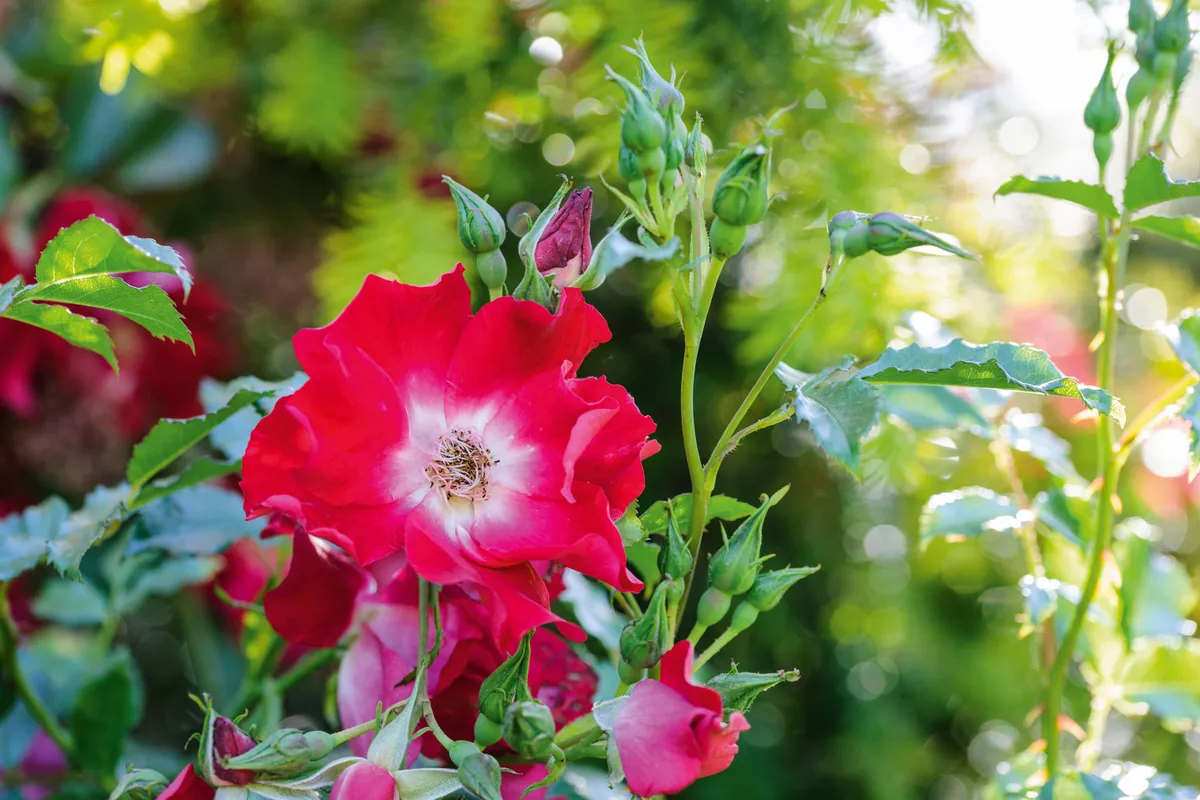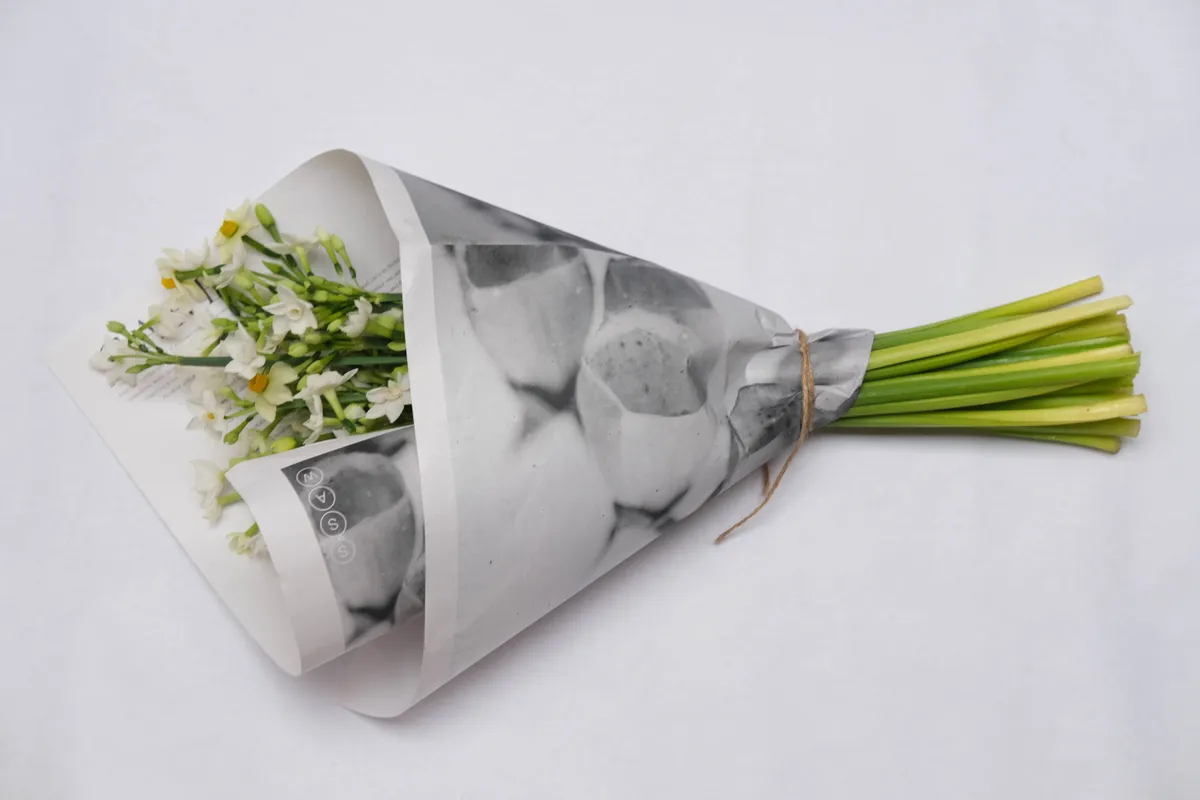There are numerous uncomfortable truths hiding behind the cut flower industry. Valentine’s Day brings these to the forefront of our minds every February, and we are now in our fifth year campaigning for a more considered approach to gifting flowers during the winter period.
There is nothing seasonal about a rose in February
Our work as part of the Spring Summer Autumn Winter Collective (SSAW Collective) is about enabling cross-disciplinary discussions around our connection to and expectations of seasonal produce. In the case of cut flowers, we often talk about the misconceptions that arise from greenwashing in the industry. ‘Seasonal’ being one of the most commonly used and thus one of the biggest problem words at present. There is nothing seasonal about a rose in February. An English rose is pruned in late winter, mulched in the spring (perhaps again in autumn) and we expect the first flush of flowers between late May and early June - if we’re lucky a second in August-September. February is clearly no time for roses in bloom. Not here, nor is it in most parts of the world.

So ‘ Why buy roses in February?’ The global love for roses is deep rooted - a connection widespread across the world in many different cultures both east and west, past and present. They stretch from Greek mythology and Hindu legend to Shakespearean prose and Victorian floriography. Roses have permeated our consciousness, which is strange because the majority of people today don’t associate symbolism elsewhere so committedly in their lives. Yet there is no denying that roses are an iconic way of representing love.
Approximately 8 million or 570 tonnes of roses were imported into the UK for Valentine’s Day at last count
However, having researched substantially into the ways in which they are grown for Valentine’s Day, our findings so far have rather killed the romance.
With high water usage, energy consumption from the heating of greenhouses and pesticide runoff, the global floriculture industry directly impacts the effects of global warming. Moreover, flowers are particularly perishable, meaning they need to be flown and trucked (not to mention refrigerated) as opposed to shipped in order to arrive fit for use. It is said every extra day a flower spends travelling it loses 15 per cent of its value. Furthermore, any florist handling imported blooms should be wearing gloves to protect them against the cocktail of chemicals in which they are covered in order for them to survive their journeys across the world and to meet the unrealistic customer demand for flowers to be long lasting. As flowers are not consumables, regulations on pesticide use are much less stringent. We dread to think what this means for the handlers earlier along the chain.
There’s also the problem of value distortion as a direct result of supermarkets
Now add Valentine’s Day into the mix - to meet demand - approximately 8 million or 570 tonnes of roses were imported into the UK for Valentine’s Day at last count - which have to be grown in artificially regulated conditions even in countries with equatorial climates. Environmental inputs are thus higher still, and so too are the ethical impacts. This intense period of high demand for just a single date means roses have to be held back or brought on by force. Overtime is often compulsory, on top of often already long hours with poor pay and working conditions.
In the UK, 80 per cent of cut flowers come via the Netherlands and 33.3 per cent of the roses imported into the EU are grown in Kenya. A dutch bouquet that includes 5 roses has a carbon footprint 32.252Kg/CO2, a Kenyan bouquet that included 5 roses, equals 31.132kg/CO2. An equivalent bouquet using British grown alternatives just 3.287Kg/CO2. A locally grown bouquet using 15 stems of outdoor grown flowers just 1.71kg/CO2.

However, buying unseasonal flowers is not just about carbon emissions, it would seem there must always be a trade-off of priorities: roses grown in greenhouses in the Netherlands use more energy, but travel less and have more regulation on working conditions and pesticide use. Kenyan roses may have natural heat and light, but use more chemicals and air miles, not to mention water in a location already suffering from water scarcity, ecological degradation and social issues including health and safety standards, gender discrimination, precarious employment and land rights.
The rose trade leaves both florist and grower at either end of the supply chain at an even lesser advantage
There’s also the problem of value distortion as a direct result of supermarkets often selling roses as loss-leaders which doesn’t reflect their true cost (economical, ethical and environmental) So, to make matters even more confusing - the product that flower fans have come to know and love, is now more affordable than ever. At the other end of the scale, independent florists are having to spend more on roses because of price hikes year on year to meet demand, and as a result of rising energy and transport costs - without being able to up their retail prices in a bid not to lose customers in such a highly competitive environment. This leaves both florist and grower at either end of the supply chain at an even lesser advantage.
To boycott roses would cause major socio-economic collapse in those countries affected
It is a complex web and there is no straightforward solution. To boycott roses would cause major socio-economic collapse in those countries affected, and we do not have a national supply of cut flowers as it stands that could meet current demand - nor should this be a goal, seeing as the British growing season does not truly start until the Spring. Being ‘sustainable’ has to be trifold for people, planet and profit and as we see it maintaining current common standards of practice by endorsing long term unrealistic consumer demands in the global north is just not sustainable.
Which flowers to buy this Valentine's Day

This year, why not gift a bare-rooted rose and watch it grow into a beautiful, ephemeral creature? Buy local, support flower farmers and small independent businesses - Have a conversation with your florist about where their stock has come from, and understand that in the same way sourcing ingredients carefully and considerately, finding the right flowers may take a little time. Flowers are a luxury, let the gifts you give this Valentine’s be as loving to the planet as they are to those receiving them.
Read our piece on alternatives to roses
In line with our renewed focus on raising awareness and content creation, we decided not to offer a floral Valentine’s Day offering ourselves this year. Instead we have collaborated with four different visual artists who responded to our call out to produce print designs for sale as a fundraiser for our advocacy work. Each one is a beautiful and striking work of art that nudges us to think a little differently about our choices around the seasons and that our purchasing power can really make a difference.
Looking for more gardening gifts?
For more info about SSAW Collective visit their website, or follow them on Instagram @ssaw.collective
